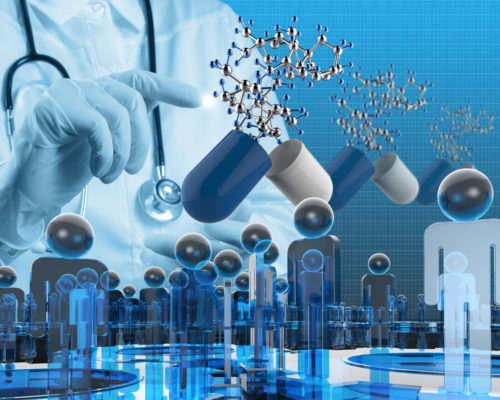Anatomy vs. physiology
What is the difference between anatomy and physiology? Some believe human anatomy can be learned without thinking about the body’s physiology. Some even go so far as to think physiologic function is a separate subject from anatomy. Nothing could be less true – anatomy and physiology are two ways of viewing the same thing.
It is physiology that shapes anatomy. It is physiology that creates the body’s physical substance and allows it to move about within the world. Physiological chemistry forms the anatomy of the body. When function fails the anatomy wastes away. Studying anatomy and physiology is easy when the big picture is focused upon first. And, the big picture consists of learning the basics of body chemistry.
Self renewal and body chemistry
Self renewal is the chemical processes by which the body constantly reshapes and repairs itself. For those of you who are taking anatomy and physiology because your goal is to become a healthcare professional, body chemistry will soon become a focus of your professional life. Body chemistry is physiology. And, physiology constantly remolds a person’s anatomy.
As children grow their physiology and anatomy mature together into an adult configuration. When adults consistently exercise parts of their anatomy, physiology changes the shape of the performing elements. For example, if you lift weights for exercise your muscles get bigger. If you run for exercise your muscles get thinner. As people age the adult form of their anatomy again changes. Anatomical consequences of aging are driven by adjustments in body chemistry.
Physiological chemistry
Students ask if they should take a chemistry course before enrolling in anatomy and physiology. My answer is not really. Happily, body chemistry relies on fewer principles than organic chemistry in general. In fact, it is difficult to translate chemistry as taught in chemistry class into physiology. This is because body chemistry is restricted to a very narrow temperature range unlike test tube chemistry and is restricted to water as a solvent.
Rather than proceeding through the first few weeks of your anatomy and physiology course trying to figure out physiological chemistry on your own, you may want to check out my book on this subject – “Physiology: Custom-Designed Chemistry; Getting past the anxiety that physiological chemistry is too hard to learn.” It is a quick read. Take a peek inside by clicking here.
“Physiology: Custom-Designed Chemistry” explains:
- The Energy that Sets Physiological Processes in Motion (What is that stuff called energy?)
- Water – a Powerfully Energetic Chemical (Where do body cells come from?)
- How Molecules Mingle and Relocate – Diffusion, Osmosis, Osmotic Pressure, & Hydrostatic Pressure (How do nutrients and waste products get into and out of the body?)
- Physiology’s Interface with Earth’s Atmosphere – Exploring Gas Laws (Why is it so important that carbon dioxide remain low in Earth’s atmosphere?)
- Fluid Compartments: the Platform for Long Distance Communication (How do nerves create an electrical signal?)
Further reading
3 Simple Secrets to Learning Physiology
Physiology: Why Learn Its Chemistry Now
Do you have questions?
Send me an email with your questions at DrReece@MedicalScienceNavigator.com or put them in the comment box. I always read my mail and answer it. Please share this article with your fellow students taking anatomy and physiology by clicking your favorite social media button.
Margaret Thompson Reece PhD, physiologist, former Senior Scientist and Laboratory Director at academic medical centers in California, New York and Massachusetts is now Manager at Reece Biomedical Consulting LLC.
She taught physiology for over 30 years to undergraduate and graduate students, at two- and four-year colleges, in the classroom and in the research laboratory. Her books “Physiology: Custom-Designed Chemistry”, “Inside the Closed World of the Brain”, and her online course “30-Day Challenge: Craft Your Plan for Learning Physiology”, and “Busy Student’s Anatomy & Physiology Study Journal” are created for those planning a career in healthcare. More about her books is available at https://www.amazon.com/author/margaretreece.
You may contact Dr. Reece at DrReece@MedicalScienceNavigator.com, or on LinkedIn.
Dr. Reece offers a free 30 minute “how-to-get-started” phone conference to students struggling with human anatomy and physiology. Schedule an appointment by email at DrReece@MedicalScienceNavigator.com.


